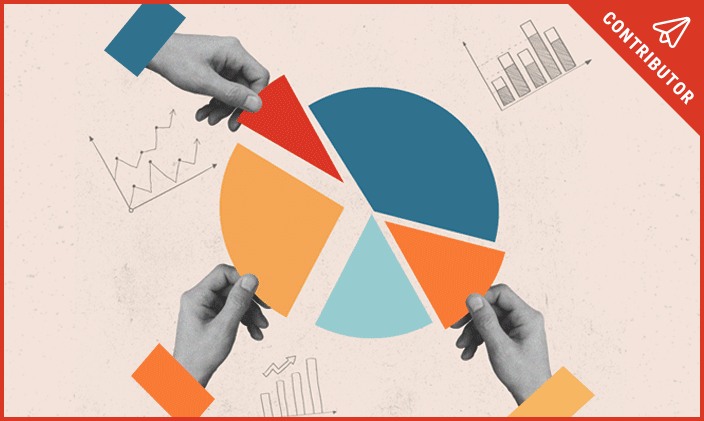Ready to repay? Federal student loan payments resume in October

Written by Dawn Handschuh

Reviewed by Chris Conway, Director of Financial Education Initiatives and Repayment Management

Student loan repayments: What’s changing
COVID-19 changed everything, from the way we work to how we get our groceries, and federal student loans were no exception.
Many federal student loans were automatically paused, and interest rates were set to 0% in response to the COVID-19 pandemic. On Sept. 1, 2023, interest resumed accruing on federal student loans, and payments will resume in October 2023.
Now, nearly 3½ years later, the federal student loan payment pause ended since Congress passed legislation barring further extensions. Here’s what you need to know, besides being ready to resume payments in October 2023.
How to resume student loan payments
A lot has changed in the past 3½ years, so resuming your federal loan payments isn’t necessarily a matter of just reactivating your auto payment.
The U.S. Department of Education and your loan servicer will notify you before payments are due again, and you should receive a billing statement from your loan servicer at least three weeks before payment is due. However, you might also take the following steps to ensure your repayment transition is a smooth one.
Get reacquainted with your loan servicer
Your loan servicer is the company that the Department of Education assigned to handle the billing and servicing of your federal student loan. There are several different loan servicers out there, and it’s important to know which one is yours.
To figure that out, you can log in to your Student Aid account, where you will be presented with your dashboard. Scroll down to the My Loan Servicers section, and click on “View More” to see your servicers. (You may have more than one.) Alternatively, you can call the Federal Student Aid Information Center at 800-433-3243.
It's especially important to do this in case your loan was transferred to a new servicer during the federal student loan payment pause. If that happened, you will want to set up an account with your new loan servicer as soon as possible.
Whether or not you have a new loan servicer, be sure to update your contact information in your Student Aid account and with your servicer. This will ensure that you receive your monthly billing statement and repayment announcements in a timely manner.
Recertify your repayment plan
If you were in repayment before the pause, you may have opted for an income-driven repayment plan (IDR) that is considered more affordable since monthly payments are determined by your income and family size.
You may wish to recertify for lower monthly payments if your income has decreased or your family has grown since the start of the pause. You’ll have at least six months to recertify your income after the payment pause ends.
If you don’t currently have an IDR and your payments aren’t affordable, you can still look at other payment plan options using the Loan Simulator, advises Chris Conway, director of financial literacy at University of Phoenix. This tool can help you understand which plans you’re eligible for and what your monthly payment amounts would be under the various plans available to you.
The Saving on a Valuable Education (SAVE) Plan, formerly known as the REPAYE Plan, is another type of income-driven plan in which monthly payments make up 10% of discretionary income and are recalculated each year based on your income and family size. If you still have a balance on your undergraduate loan after 20 years (or 25 years on graduate loans), it will be forgiven.
However, these terms will change in July 2024. Instead of your monthly payment being based on 10% of your discretionary income, monthly payments will make up 5% of your discretionary income, and if your balance is below $12,000, it will be forgiven after 10 years instead of 20.
The SAVE Plan is an option for those who have taken any kind of Direct Loan, including Direct Subsidized and Unsubsidized Loans; Direct PLUS Loans made to you, the student; and Direct Consolidation Loans that don’t include PLUS loans made to parents.
While you can apply for IDR plans without talking to your loan servicer, your loan servicer is who you’ll work with to make payments, change repayment plans and manage your student loans.
“You can expect they will be very busy during the early months following the restart of federal loan repayments, but you should still ask for help if it’s needed,” Conway says. “It’s important not to ignore payments that are due. If you find your payments are unaffordable, talk to your loan servicer or review your options by checking your online account.”
Students may also want to consider providing consent to allow the secure disclosure of their tax information to be automatically provided to the Department of Education and their federal student loan servicer each year to recertify their enrollment in an IDR plan, Conway adds, because it can impact adjustments to their monthly payment amount.
This can also save you time and energy since you won’t have to manually provide details on your income or family size each year. You will always be notified when your payment amount changes.
Revisit your loan payment amount, interest rate and balance
While your first monthly bill will contain the amount due, your loan servicer may notify you sooner. You can also check your account on your loan servicer’s website.
In most cases, your interest rate will remain the same, but if, for example, you consolidated your loans during the payment pause, it may change. Your loan servicer’s website will contain these details on your dashboard, along with your loan balance.
Confirm your autopay enrollment details
If you were previously enrolled in autopay before the payment pause and wish to resume those automatic payments, you’ll need to confirm your autopay enrollment with your student loan servicer. Make sure your linked bank account has sufficient funds to cover the loan payment.
Remember, if you are enrolled in autopay, your loan servicer will automatically withdraw your monthly payments from your bank account, ensuring your online payments are made on time. You will also pay less in interest each month. You can enroll in autopay on your loan servicer’s website.
A tip for those new to federal loan repayments
If you graduated during the COVID-19 pandemic, you may have yet to make your first federal student loan repayment. Nevertheless, your first payment will be due in October 2023 unless you graduated recently and are in a grace period. (Direct Subsidized and Direct Unsubsidized Loans have a six-month grace period following graduation, but not all federal loans have one.)
Set aside some time now to double-check your contact information on StudentAid.gov and with your federal student loan servicer, and review your loan details and payment method to ensure on-time payments. Doing so now is like studying for a test: It helps make the big day go a little smoother.
Responsible borrowing at University of Phoenix
Navigating the world of loans, scholarships and grants can feel overwhelming, but if you use the principles of responsible borrowing, your pathway might become a little clearer.
Simply put, responsible borrowing is taking out loans for only what you need. You may be offered more, but anything you borrow today has to be paid back — with interest — tomorrow.
As always, it’s best to explore grants and scholarships before you apply for a loan.
Learn more about federal student aid on the University of Phoenix website and PhoenixConnect blog!

ABOUT THE AUTHOR
Dawn Handschuh has been putting pen to paper for more than 30 years, writing widely on topics related to student lending, personal finances, everyday money management and retirement planning. She makes her home in Connecticut with her husband and two energetic German shepherds.

ABOUT THE REVIEWER
As Director of Financial Education Initiatives and Repayment Management, Chris Conway works with departments across the University to provide resources that allow students to make more informed financial decisions. She is also an adjunct faculty member for the Everyday Finance and Economics course at the University, and she chairs the National Council of Higher Education Resources College Access and Success Committee. Conway is committed to helping college students make the right financial decisions that prevent future collection activity.
This article has been vetted by University of Phoenix's editorial advisory committee.
Read more about our editorial process.
Read more articles like this:


